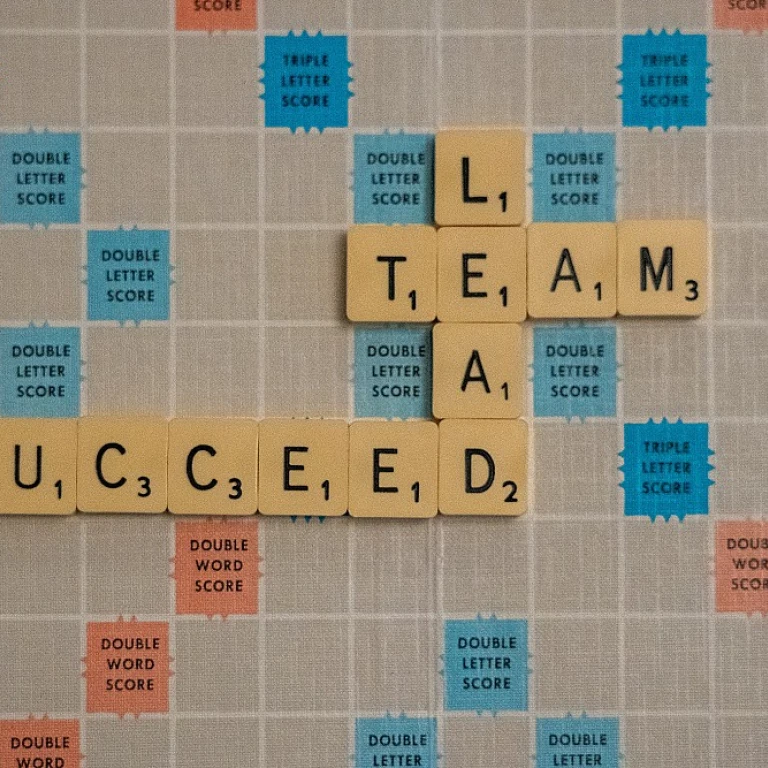
Understanding the 9-box talent grid
Decoding the Box Model for Talent Management
The 9-box talent grid is a pivotal tool in the realm of talent management, serving as a strategic framework for assessing employee performance and potential. This grid is employed by organizations to evaluate and categorize employees based on two critical dimensions: performance and potential. Understanding this model is essential for any HR professional aiming to optimize their workforce.The grid is structured into nine boxes, each representing different levels of performance and potential. On one axis, you have performance—ranging from high to low—and on the other, potential, which similarly varies from high to low. This dual-axis approach aids in identifying high performers who hold high potential and, conversely, those of low performance or potential. This strategic categorization is integral for successful succession planning and leadership development within an organization.
Recognizing where an employee falls on this grid provides valuable insights. For instance, high performers with high potential are often earmarked for leadership roles, while those with moderate potential may benefit from specific development programs. The grid also highlights employees who might need additional motivation or training to enhance their capabilities.
The significance of the 9-box grid is not just in categorizing team members but in shaping the future of an organization's talent strategy. It forms the bedrock for comprehensive performance management and succession planning, allowing leaders to allocate resources wisely and ensure a robust talent pipeline. For more insights into structuring your organization's HR framework, explore the concept of span of control in HR leadership.
The role of a chief human resources officer in talent management
Chief HR Officer's Strategic Influence in Talent Management
The Chief Human Resources Officer (CHRO) holds a pivotal role in steering the talent management strategy within any organization. Understanding how to maximize the performance potential of employees is crucial. At the core of this strategy lies the effective use of the 9-box talent grid, a tool that aids in tying performance management directly to talent review and development.
The 9-box grid serves as a model for assessing employees based on their performance and potential. CHROs use this box grid as a succession planning tool to identify high performers and moderate potential employees, ensuring that the right leadership paths are charted for the future success of the organization. This strategic insight enhances not only individual employee performance but also strengthens the overall management prowess of the organization.
Aligning Leadership with Organizational Goals
High potential employees are prime candidates for leadership roles, and the implementation of the talent grid ensures they are on the correct professional trajectories. This strategic alignment is part of the broader talent management responsibility of a CHRO. By continuously reviewing the alignment of talent plans with organizational goals, the CHRO ensures that high performers are groomed for pivotal positions.
It is also essential to identify low performance or low potential team members. The CHRO must work closely with managers to develop plans that address these challenges and foster the development of every employee. This alignment between HR strategies and business objectives is critical for maintaining a competitive edge and ensuring future-ready leadership within the organization.
For further insights into the strategic importance of these actions in HR leadership, it is beneficial to explore the importance of pay equity analysis in shaping fair and effective talent management strategies.
Implementing the 9-box talent grid effectively
Steps to Effectively Integrate the 9-Box Talent Grid
Implementing the 9-box talent grid effectively is a nuanced process, requiring strategic planning and thoughtful application in order to harness its full potential. Here, we delve into several key steps that chief human resources officers (CHROs) and HR teams should consider when looking to fully integrate this powerful talent management tool into their organizations.Align with Organizational Goals
The first step towards leveraging the 9-box grid is ensuring alignment with the broader organizational goals. By communicating and collaborating with leadership, HR professionals can ensure that performance and potential are evaluated in a manner that supports the organization's vision for future growth.Define Performance and Potential Criteria
Before effectively utilizing the grid, it’s crucial to establish clear definitions for performance and potential. These should be tailored to the organization’s specific context. Performance metrics might include sales figures, project completion rates, or other quantifiable achievements. Meanwhile, potential may involve evaluating leadership qualities, adaptability, and the ability to drive innovation.Training and Calibration Sessions
To maintain consistency, managers should undergo comprehensive training sessions on how to objectively assess their team members. Calibration meetings among leadership and HR teams can be critical in ensuring that the assessment of performance and potential is consistent across all departments.Inclusive Talent Review Process
The implementation strategy should also feature an inclusive talent review process that promotes diversity and mitigates bias. This involves recognizing high performers and understanding the impact of moderate or low performers on team dynamics.Feedback and Development Plans
Once employees are mapped on the grid, it's vital to facilitate feedback sessions. In these discussions, managers should share constructive feedback and collaboratively develop personalized development plans with employees. This not only aids in fostering growth but also in mapping out succession planning, especially for those identified as high potential employees.Ongoing Monitoring and Adjustment
The 9-box talent grid isn't a one-time exercise. Regular review and adjustments ensure that the grid remains relevant to the organization’s evolving needs. Evaluating succession plans and conducting ongoing talent reviews can help in identifying shifts in employee performance and potential over time. Applying these steps with precision can lead to successful implementation of the 9-box talent grid, translating into improved performance management and better succession planning in any organization. For more insights on understanding the scope of management in HR leadership roles, refer to this detailed guide.Challenges in using the 9-box talent grid
Overcoming Hurdles in the Talent Assessment Journey
Implementing the 9-box talent grid can be a highly valuable tool in performance management and talent development. However, organizations may encounter various challenges along this assessment journey. Identifying these roadblocks early on can provide an opportunity for effective strategizing and planning. One common challenge is the subjectivity involved in evaluating employee potential and performance. Misjudging these elements could misplace employees within the grid, potentially leading to underutilization of a high performer or mismanagement of talent with low potential. To tackle this, it is essential that managers undergo thorough training on how to accurately assess performance and future potential. Moreover, constant review and recalibration should be integrated into the management process to ensure criteria remain consistent and relevant. The buy-in from leadership and management can also play a crucial role. Without their support, deploying the grid effectively risks becoming just another checkbox exercise. Leaders must understand the value of the grid in succession planning and the future development of high potential employees. By involving them actively in talent reviews and succession planning processes, you foster an ownership mindset, encouraging managers to engage more deeply with their team members' growth within the organization. Achieving an unbiased assessment can be another hurdle. Organizations need to create a fair and open environment where management teams feel comfortable discussing and challenging each other’s perceptions. Effective talent management thrives on open dialogue and collaborative decision-making, where diverse perspectives converge for a fairer talent assessment process. Finally, ensuring your organization fully integrates the 9-box model into its larger organizational strategy is crucial. It should align with organizational goals and feed into broader talent management and performance evaluation strategies. This ensures that the grid box is not just an isolated tool but part of a comprehensive strategy driving the organization towards high performance and sustained success, aligning with the company's overall vision and objectives.Case studies: Success stories with the 9-box talent grid
Transforming Success with Real-World Examples
Navigating the complexities of the 9-box talent grid can be challenging, but numerous organizations have effectively utilized this tool to elevate their talent management strategies. Let's explore some success stories that highlight the power of the grid in unlocking employee performance and potential.- Boosting High-Performance Culture: An organization striving to improve its culture of high performance incorporated the 9-box model as part of its performance management strategy. By clearly identifying high performers and understanding their potential, the leadership was able to tailor development plans that fostered growth and nurtured talent for future leadership roles. This strategic approach led to a notable increase in employee engagement and overall performance.
- Enhancing Succession Planning: Faced with the challenge of effective succession planning, one company used the talent grid to conduct a comprehensive talent review. This allowed HR managers to visualize employees across different performance and potential levels. With clear insights, the company could make informed decisions about future leadership and ensure continuity in crucial roles. As a result, the organization saw a seamless transition in leadership positions, reducing potential disruptions.
- Developing a High-Potential Workforce: Through the grid box system, a multinational corporation identified moderate potential team members who were previously overlooked in traditional performance appraisals. By investing in their development, the organization was able to transform moderate potential employees into high performers. This not only increased the talent pool for leadership roles but also reinforced a strong internal growth culture.
Future trends in talent management and the 9-box talent grid
Exploring Future Trends in Talent Management
The dynamic nature of today's workforce necessitates a forward-thinking approach to talent management. The 9-box talent grid, a pivotal tool in this domain, will continue to evolve, adapting to new challenges and technological advancements. Organizations must remain agile to harness its full potential.
One anticipated trend is the integration of advanced data analytics. By leveraging data, companies can gain deeper insights into employee performance and potential, thereby refining their talent strategies. This analytic approach not only enhances performance management but also supports more effective succession planning by identifying high performers and potential employees earlier in their careers.
Moreover, the fusion of artificial intelligence with the 9-box grid enables organizations to automate tedious aspects of talent review processes. AI tools can help in filtering vast amounts of performance data, highlighting moderate potential or low-performance team members who may require development.
The role of leaders and managers is also undergoing transformation. As more team members seek out meaningful career paths and opportunities for development, leadership teams must focus on personalized employee engagement strategies. High-potential employees, in particular, seek mentorship and leadership opportunities. This focus ensures that the leadership pipeline remains strong and capable of driving future organizational success.
Employee mobility and remote work change the landscape further. As organizations embrace remote and hybrid models, the 9-box talent grid's flexibility allows for a more comprehensive mapping of talent across diverse settings. This adaptability is crucial as many organizations shift towards more inclusive and geographically dispersed teams.
Lastly, the convergence of different performance potential models with the 9-box grid brings about nuanced approaches to evaluating talent. Incorporating elements from other frameworks can aid in more tailored employee development plans, ensuring that the grid remains a versatile tool for all HR needs.












